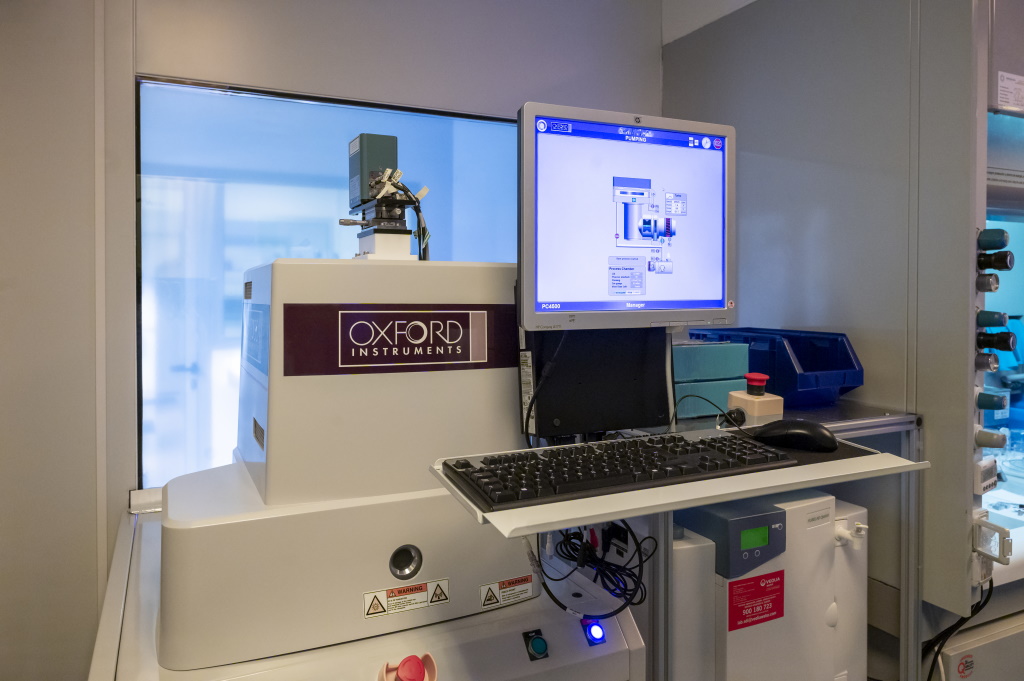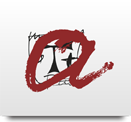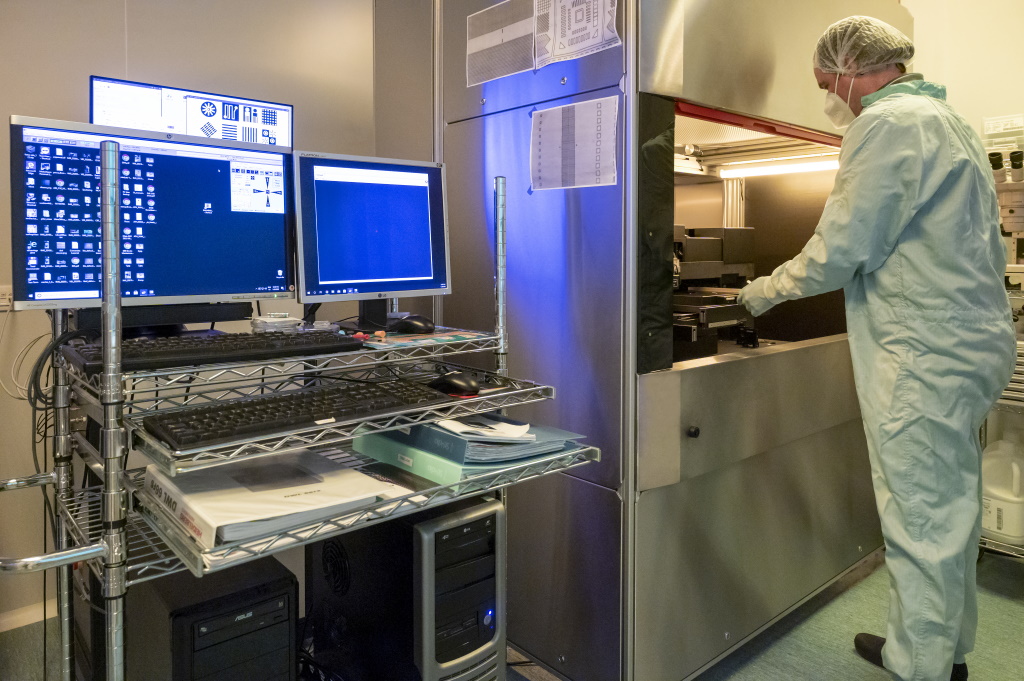-
Description
The Clean Room facility is classified as ISO 7, which corresponds to a 10.000 class (American Federal Standard 209). Inside the Clean Room, besides tha main processing equipment, we find a UV lamp for the exposure of photosensitive resins, which allows the user to adjust the exposure time and the light power to deliver the desired dose to the light-sensitive resist. A drying oven, a wet bench and a fume hood, used to perform different chemical processes (aqua regia, piranha etching, etc.), are also available. Inside the fume hood there is a spin coater to deposit homogenous resist layers on substrates, and two hot plates.
Aiming at guaranteeing a good air quality inside the clean room, periodical qualifications are carried out through an external auditor. The main purpose of said qualifications is to ensure that ISO 7 requirements are fulfilled in this facility. Additionally, the quality of the air is periodically checked by clean room technicians during specific operational events that may compromise the cleanliness of the air (after changing climate control HEPA filtering units, after holiday periods, after accidental mains supply energy cut-offs, etc.). The monitoring of the airborne particles in these circumstances is carried out with an ISO certified hand-held device, a PCE-PQC 13EU from PCE Instruments, which allows to produce reports and is suited to measure representative air volumes according to ISO standards.
Outside the clean room there is a CO2 laser of 25 W of power that can engrave areas as big as 27x27 mm2 over plastic, metal, glass, wood and other materials at a speed of 225 characters per second. A tubular furnace is also available to perform bakes at a high temperature with the control of ammonia flux.
Equipment inside the Cleam Room
- Sistema de sputtering: Orion 8HV (AJA International)
- RIE: Plasma PRO 80 (Oxford Instruments)
- Láser: DWL 66fs (Heildelberg Instruments)
Support equipment inside the Clean Room
- UV led lamp: UV-KUB 2 (Kloé)
- Spin coater: Polos Spin 150i (SPS Europe)
- Hot-plates
- Drying oven: UNB100 (Memmert)
Equipment outside the Clean Room
- Laser marker: Fenix Flyer (Synrad)
- Tubular furnace: Clarkson 79300 (Thermo Scientific)
Software
- CleWin® (DXF, CIF, GDSII, BMP, Gerber, Ascii i STL)
Sputtering
The RF-DC magnetron sputtering system is used to deposit thin films of different materials (conductors, semiconductors and dielectrics) on substrates so that they are distributed very homogenously (physical vapor deposition, PVD). This method allows to control in a very precise way the thickness and the granular distribution of the sputtered atoms or molecules in the resulting layer. A remarkable feature of this equipment is that it allows to quickly load different substrates inside the main chamber thanks to its load lock pre-chamber with independent vacuum pump. This enables the samples to be moved inside the main chamber without having to break the vacuum.
This system has two guns, each one connected to a DC (for metals) and RF (metals and insulators) power supplies, that can accommodate 2" diameter targets of different materials. Both guns can be configured for the sputtering of ferromagnetic materials. The system also possesses a COPRA source to perform ion beam milling of the substrates. Additionally, in those situations where the deposition rate of a given material is unknown, this system has a probe that is able to measure the thickness of the deposited film in real time.
The sputtering system available inside the Clean Room is an Orion 8HV from AJA International.
-
Fabrication of mirror surfaces with optical quality.
-
Fabrication of reflective, anti-reflective and absorbing coatings.
-
Fabrication of electrodes and electrical resistances.
-
Controlled thickness surface deposition for surface plasmon resonance applications.
-
Elaboration of masks for photolithography or dry etching applications.
-
Nanoparticles deposition.
 Reactive Ion Etcing (RIE)
Reactive Ion Etcing (RIE)
The RIE (reactive ion etching) system is mainly used in dry etching processes by the direct exposure of a substrate to different plasma reactive species. The main advantage of this etching method over conventional techniques, such as wet etching, is the anisotropy it can achieve during the etching process (etching preference in the vertical direction) by adjusting the parameters of each process (gas flow rate, RF source power, time and pressure inside the chamber).
Additionally, this device possesses an ICP source (inductively-coupled plasma) which improves the etching rate to obtain higher aspect ratio structures without losing the etching anisotropy. The available gases in the RIE are Ar, O2, SF6, CHF3 and C4F8. This system also allows the adjustment of the substrate temperature as well as to perform processes at cryogenic temperature.
The RIE system available inside the Clean Room is a Plasma PRO 80 from Oxford Instruments.
-
Dry etching processes.
-
Surface modification to change the optical properties of a substrate (black silicon).
-
Surface activation for irreversible bonding at the molecular level (PDMS-PDMS) or surface hydrophobicity/hydrophilicity variation.
Laser Lithography
The laser lithography system is used for direct writing with 405 nm light over photoresist-coated substrates and it is able to produce sub-micron resolution patterns. The objective used to focus the laser provides resolutions of around 0.6 µm and a writing speed of 3 mm2/min. The specified substrate maximum size is 200x200 mm2. A CCD is used for the precise alignment, observation and metrology measurements of the sample after the development step. The optical setup (laser and the granite platform) is placed inside a climatic chamber that keeps the temperature under control and maintains the device isolated from dust or particles whose size is too small to be filtered by the Clean Room climate control system. The designs for the lithography processes can be created with the CleWin® software available in the Clean Room. Admitted file extensions are DXF, CIF, GDSII, BMP, Gerber, Ascii and STL.
The laser lithography system available at the Clean Room is a DWL 66fs from Heidelberg Instruments.
-
MEMS and microstructures fabrication.
-
Mould fabrication for microfluidics
-
Design and construction of electronic components.
-
Photomask fabrication for photolithography.
-
Contact those
responsables - Eric Pedrol Ripoll, Ph.D.
- 977558473
- eric.pedrol(ELIMINAR)@urv.cat
-
- Mariana Stefanova Stankova, Ph. D.
- 977558123
- mariana.stefanova(ELIMINAR)@urv.cat
-
Technical coordinator
- Mercè Moncusí Mercadé
- 977558123
- merce.moncusi(ELIMINAR)@urv.cat
*Already registered on the User Portal?

